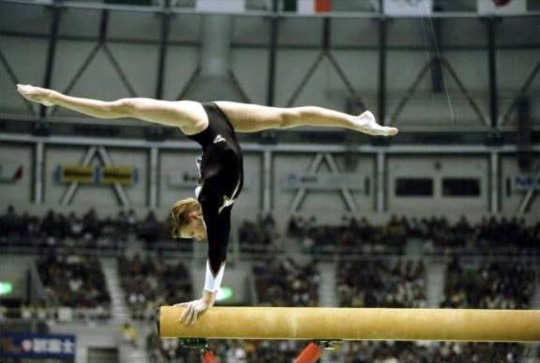#khorkina
Explore tagged Tumblr posts
Text
My stupid ass Mouthwashing OCs /affectionate
Fran Delgado - A constantly on edge and meticulous co-pilot for the freighter called “Sleipnir.” Also a devout Christian who may or may not have the occasional existential crisis or two. Not exactly the best at handling conflict. (They/them)
Kenneth “Kenny” Dean - The captain of the “Sleipnir” freighter, Kenneth (or Kenny as he insists to be called), is an older man who was once a model with a “bad boy” aesthetic during his younger years. Despite having long since moved on from his modeling career and his older age, Kenny still finds great enjoyment in receiving attention regarding his appearance and his past. (He/him)
Eleanor Saunders - A well experienced nurse (not for Pony Express, just for a regular hospital) who likes to spend her days sitting out on her porch and smoking a cigarette. She often hides her loneliness, and frankly a lot of her emotions, behind a mask of apathy and dismissal. She’s also my version of Swansea’s wife. She misses her husband Tails. She misses him a lot. (She/her)
Adrian Khorkina - A forensic scientist with a stern and no nonsense attitude, who can be very intimidating to others. Pretty strong as well, enough to easily carry someone over his shoulder with ease. Is the older brother of Anya, with her also being one of the only people he drops his intimidating persona around. He misses his sister Tails. He misses her a lot. (He/they)
#(also fun fact Khorkina is my hc surname for Anya)#(I know we get her surname on her ID card but it’s so cursive I can’t tell what it says)#(plus I got attached to Khorkina)#my post#mouthwashing#Mouthwashing game#mouthwashing oc#OCs#Fran#Kenny#Eleanor#Adrian
45 notes
·
View notes
Text
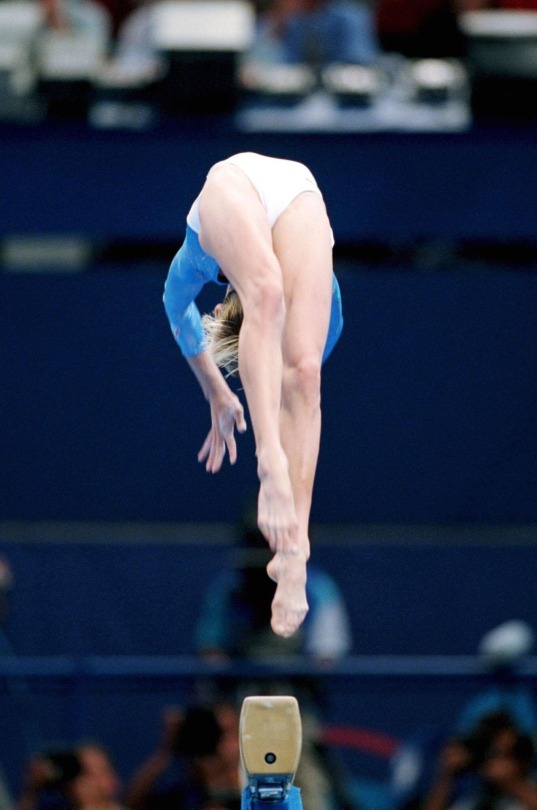
28 notes
·
View notes
Text
kailin chio markelov !!
6 notes
·
View notes
Text
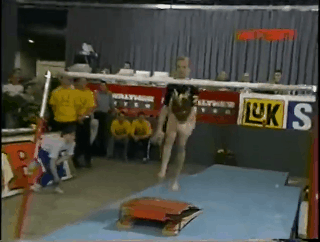
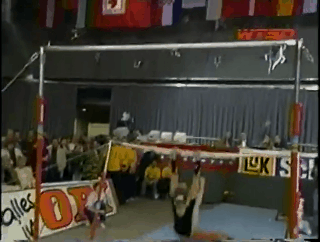
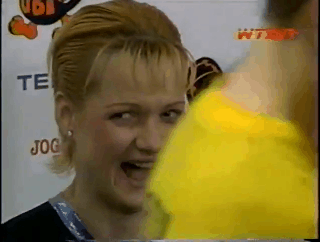
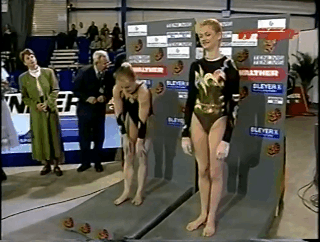
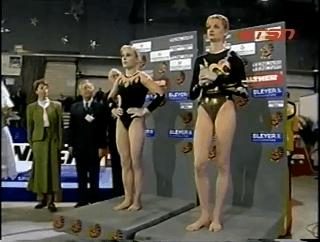
Great Gymnastics Battles
Two Double Olympic Gold Medalists (RUS) vs Performing Two Elite Bars Routines in 15 minutes (GER)
Svetlana Khorkina (RUS) - 7.775 Elena Zamolodchikova (RUS) - 7.200
This was the 2001 Cottbus Turnier der Meister--a part of the World Cup qualification circuit at the time. It was a common format at both Cottbus and the DTB Pokal for the top two finishers in an event final to then have to repeat their routines in a "Winners Final". Often times this resulted in the gold and silver decided by who handled being exhausted better. And yes the hydraulic podiums were common too.
32 notes
·
View notes
Photo

Svetlana Khorkina 🇷🇺
Athens 2004 Olympics
#svetlana khorkina#team russia#balance beam#artistic gymnastics#gymnastics#russian gymnastics#athens 2004#olympics
47 notes
·
View notes
Text
youtube
Gelya's filmed a documentary about the making of an Olympic Champion - Mustafina & Khorkina are also interviewed for it, Vorona too.
Shows training footage and her opening her gym ✨
17 notes
·
View notes
Text
Found this update about Sabrina/Romania and the floor final on reddit. I do like the stipulation that Jordan will keep her medal, but I'm worried about setting a precedent for allowing scores for routines from competitions that are already over? (Even though in my heart I truly feel that Sabrina should have been the one on the podium to begin with, especially with that bogus neutral deduction that nobody can explain). This feels like this is only happening because Nadia fucking Comaneci is advocating for it, and I'm not sure I like the precedent of legends of the sport throwing their weight around to influence the FIG either (especially with what we know is going on with FRG with Catalina Ponor and Daniela Silivas harassing Ana and her coaches). Like imagine if the Karolyis had the ability to throw their weight around with the FIG while they were still active? Or if in the future Simone or Khorkina or Boginskaya could just step in and protest a score for an athlete. Plenty of people have also already talked about how Jordan's first individual Olympic medal (an incredible accomplishment!!) is so controversial and how awful the situation is for her and Ana, but all of that still stands.... what an absolute shitshow
#gymnastics#i guess we'll have to wait and see..#i'd also like to know what sabrina's initial inquiry (which got rejected) was about#sabrina's mother and everyone in her camp is already feral and insane and though she seems like a perfectly nice girl#i can't help but worry that this will just embolden everyone in her camp and make them even more insane
26 notes
·
View notes
Text
Obsessed with Suni's dream olympic team (from an Elle interview):
Nastia Liukin, Aliya Mustafina, Simone Biles, Svetlana Khorkina, and Dominique Dawes.
#seems like lots of bars girlies who happen to have AA titles lol#plus simone#but i guess she does have a UB silver
15 notes
·
View notes
Text
Kind of curious, do you guys have any headcanons of the crew’s surnames? I’ve made some headcanon surnames for the crew a while before the game came out. Some of these might not fit now that the game is out but might as well share them anyways
Anya - Khorkina
Daisuke - Sasaki
Swansea - Saunders
Jimmy - Higgins
Curly - Holloway
21 notes
·
View notes
Text




Svetlana Khorkina and the vast conspiracy against her and Russia.
12 notes
·
View notes
Text

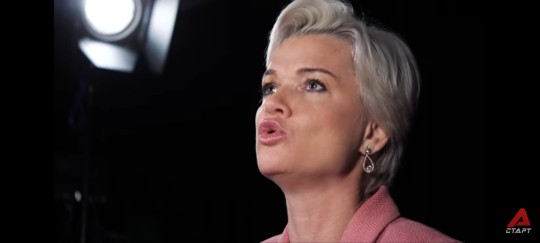
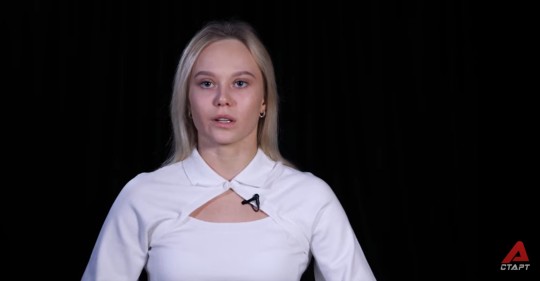
9 notes
·
View notes
Text
Svetlana khorkina always looked a lot taller than her competitors that I thought she was like 5’7”
We need to bring back the athletics body type post
52K notes
·
View notes
Text
Svetlana Khorkina - Bars
In 2024, the name Svetlana Khorkina is synonymous with pro-Putin politics, egomania, and extremely outspoken comments on social media. BUT — in her day — she was a revolutionary and dominant Bars competitor. At 5′ 5″ not wearing grips! Click PLAY or watch it on YouTube.

View On WordPress
1 note
·
View note



